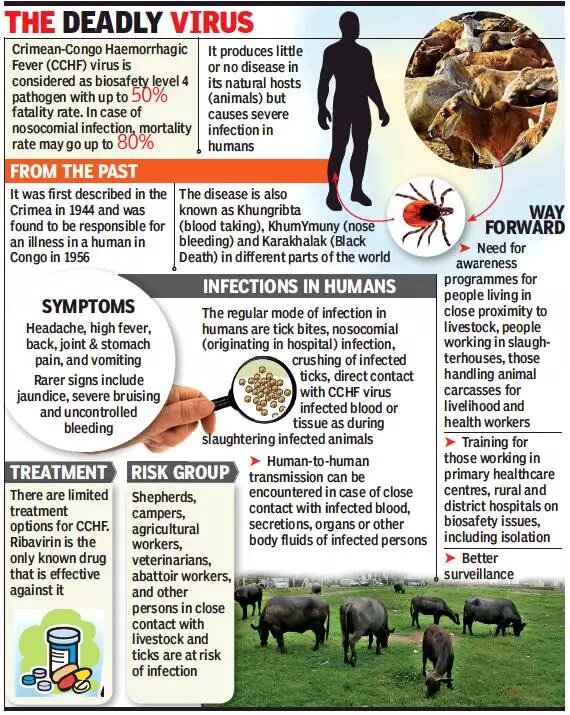Science & Technology
Congo Fever Alert in Maharashtra
- 30 Sep 2020
- 3 min read
Why in News
The Palghar administration has asked authorities to remain alert against a possible spread of the Congo fever in the Maharashtra district.
Key Points
- Background: Congo fever was first discovered in Crimea in 1944 and was named Crimean hemorrhagic fever.
- Later in 1969, scientists discovered that the pathogen responsible for causing Crimean hemorrhagic fever and the one that caused illness in Congo in 1956 was the same.
- Hence, the name changed to Crimean-Congo haemorrhagic fever.
- Crimean-Congo Haemorrhagic Fever (CCHF):
- Cause: The CCHF is a widespread disease caused by a tick-borne virus (Nairovirus) of the Bunyaviridae family.
- Transmission:
- The virus is transmitted through bite of Hyalomma tick, an external parasite, living by feeding on the blood of mammals, birds etc.
- It can also be contracted through contact with viraemic animal tissues (animal tissue where the virus has entered the bloodstream) during and immediately post-slaughter of animals.
- Human-to-human transmission: It can occur resulting from close contact with the blood, secretions, organs or other bodily fluids of infected persons.
- Hospital-acquired infections can also occur due to improper sterilisation of medical equipment, reuse of needles and contamination of medical supplies.
- Fatality: CCHF outbreaks constitute a threat to public health services as the virus can lead to epidemics, with a high case fatality ratio (10-40%).
- Case fatality rate (CFR) is a measure of the severity of a disease and is defined as the proportion of cases of a specified disease or condition which are fatal within a specified time.
- CCHF is endemic in all of Africa, the Balkans, the Middle East and in Asia.
- Symptoms:
- Fever, muscle ache, dizziness, neck pain, backache, headache, sore eyes and photophobia (sensitivity to light).
- There may be nausea, vomiting, diarrhoea, abdominal pain and sore throat early on, followed by sharp mood swings, confusion, depression and liver enlargement.
- Treatment:
- General supportive care with treatment of symptoms is the main approach to managing CCHF in people.
- The antiviral drug ribavirin has been used to treat CCHF infection with apparent benefit.
- There are no vaccines widely available for human or animal use.







